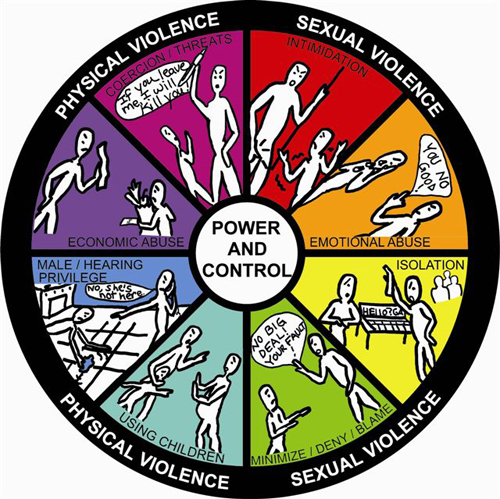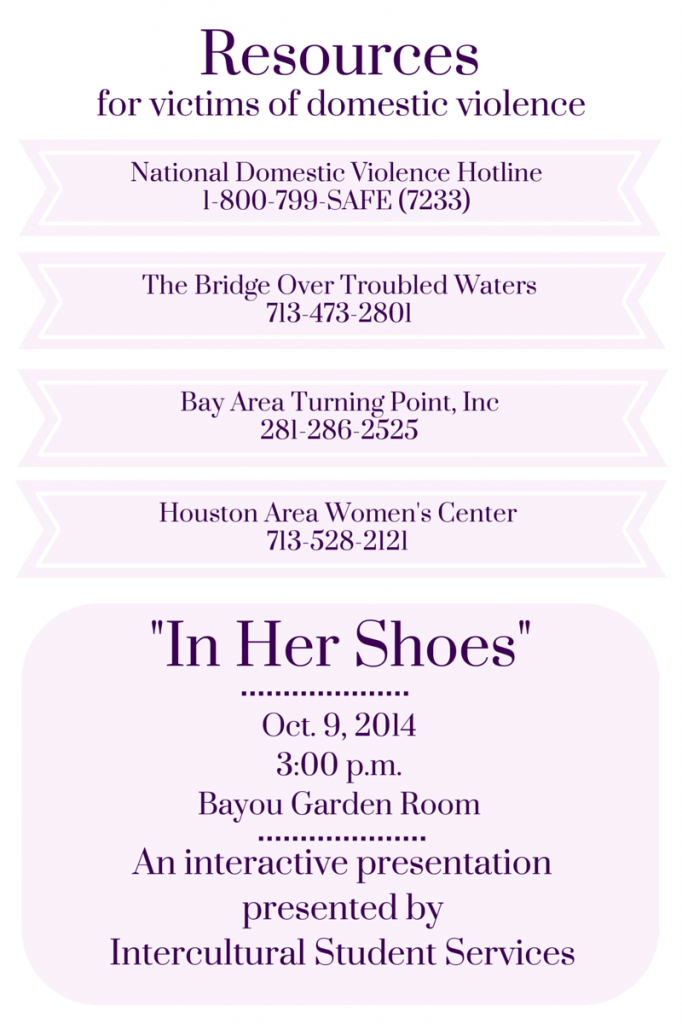
Domestic violence: not just an NFL issue
Recent news coverage of domestic violence cases concerning various NFL players such as Ray Rice, Greg Hardy and Ray McDonald has put a spotlight on the issue of domestic violence and how it affects people on all economic levels.
“Women of every single socio-economic and ethnic group are pretty much equal in having experienced domestic violence at some point during their lives,” said Charlotte Haney, human sciences and humanities visiting lecturer and professor for the first-year seminar.
The National Coalition against Domestic Violence (NCADV) states on its website that “1 in 3 women have experienced physical violence by an intimate partner.”
“Domestic violence knows no status; [It] is not picky,” said Shaun Simon, coordinator for the Women’s and LGBT Services in Intercultural Student Services.
Simon said domestic violence is not an issue that abruptly appears via physical violence on the first date. She stated that domestic violence can start subtly with little comments about a partner’s choice in apparel to slowly isolating the partner from friends and family.
“A lot of times when women talk about domestic violence, people think about punches, bruises and the physical injuries,” Haney said. “What gets lost in it is that daily life is a life inside of a situation of terrorism. There is financial control; there is isolation; there are all these things that go on to make the woman increasingly dependent on her partner so that it’s increasingly difficult for her to get out.”
The National Network to End Domestic Violence (NNEDV) states on its website that “the deck is stacked against the victim when confronted with leaving or not. Abusers work very hard to keep victims in relationships.”
“On average, it usually takes seven times for a victim to leave,” Simon said.
The NCADV website also reports that “72 percent of all murder-suicides involve an intimate partner and 94 percent of the victims of these murder-suicides are female.”
“What we know is that the most dangerous time for a woman is when she leaves and the period right after she leaves,” Haney said. “That is when women really get hurt, and they know that, so they try to figure out a way to get out as safely as possible and sometimes that takes resources that take them years to get.”
The NNEDV annually tracks the volume of domestic violence services by designating a census date in which domestic violence programs across the nation participate and record the amount of services they provide in a day.
The NNEDV website reports that on Sept. 17, 2013, there were “66,581 victims served,” and there were“9,641 unmet requests for services.”
Judge K. Randall Hufstetler, of the 300th District Court, stated that in cases of domestic violence “the legal options available typically revolve around civil and criminal actions.”
“Civil could include requesting a protective order; the protective order is an order issued by a civil court judge that can last up to two years (and may be extended under certain circumstances),” Hufstetler said. “There must be sworn testimony that the violence has occurred and that it is likely to occur in the future. In most cases, the protective order prevents the perpetrator from coming to the victim’s home, school, place of employment or contacting the victim in any manner.”
Domestic violence is not just a women’s issue. The NCADV reports on its website that “1 in 10 men have experienced rape, physical violence, and/or stalking by an intimate partner in their lifetime,” and while domestic violence is a criminal offense, “most cases of domestic violence are never reported to the police.”
“The criminal options available involve filing criminal charges for assault,” Hufstetler said. “The range of punishment depends on the nature of the assault and can range from probation all the way to life in prison if the perpetrator is a multiple offender and aggravated circumstances are involved such as serious bodily injury.”
Haney advises anyone who has a friend who is experiencing domestic violence to remain supportive of that friend.
“The abuser is trying to alienate them from everyone, so provide your loved one, or the person you care about, with resources,” Haney said.
